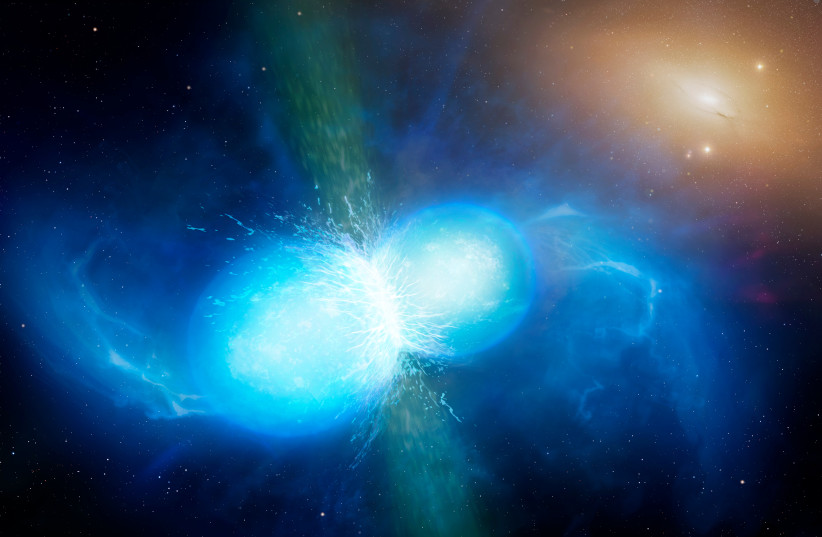Researchers from the University of Copenhagen published a new peer-reviewed study that has found another clue in the scientific quest to measure the age of the universe.
A Kilonovae explosion, according to the research, occurs when two neutron stars meet. The stars orbit each other at 100 times a second until they collide.
It has just been discovered that the explosion that occurs from the collision forms the shape of a perfect sphere.
The explosion is thought to be responsible for universal creation. When the explosion occurs, the heaviest elements in the periodic table, like gold and uranium, are produced.
Kilonova’s round explosion
A Kilonova was detected in 2017, 140 million lightyears away. The discovery was the first opportunity scientists had to study the topic.

"No one expected the explosion to look like this. It makes no sense that it is spherical, like a ball. But our calculations clearly show that it is. This probably means that the theories and simulations of kilonovae that we have been considering over the past 25 years lack important physics," said Darach Watson, one of the authors of the study.
Scientists are still trying to understand why the spherical shape occurred in the explosion.
"No one expected the explosion to look like this. It makes no sense that it is spherical, like a ball. But our calculations clearly show that it is."
Darach Watson
Albert Sneppen, one oftheorizesors of the study theorises that “the most likely way to make the explosion spherical is if a huge amount of energy blows out from the center of the explosion and smooths out a shape that would otherwise be asymmetrical. So, the spherical shape tells us that there is probably a lot of energy in the core of the collision, whictheorizedoreseen."
Watson theorised that "perhaps a kind of 'magnetic bomb' is created at the moment when the energy from the hypermassive neutron star's enormous magnetic field is released when the star collapses into a black hole. The release of magnetic energy could cause the matter in the explosion to be distributed more spherically. In that case, the birth of the black hole may be very energetic.”
The explosion also offers a key to understanding how fast the universe is expanding by. While more data is needed for this calculation, Watson predicts that more Kilonovae will be detected in future years.
New mystery
The theory that the two scientists offered does not explain why heavier and lighter elements have not been expelled from different areas of the explosion. The two scientists were only able to detect lighter elements being evenly distributed in space.
In response to the need for a new hypothesis, Sneppen offers, “an alternative idea is that in the milliseconds that the hypermassive neutron star lives, it emits very powerfully, possibly including a huge number of neutrinos. Neutrinos can cause neutrons to convert into protons and eons, and thus create more lighter elements overall. This idea also has shortcomings, but we believe that neutrinos play an even more important role than we thought."
